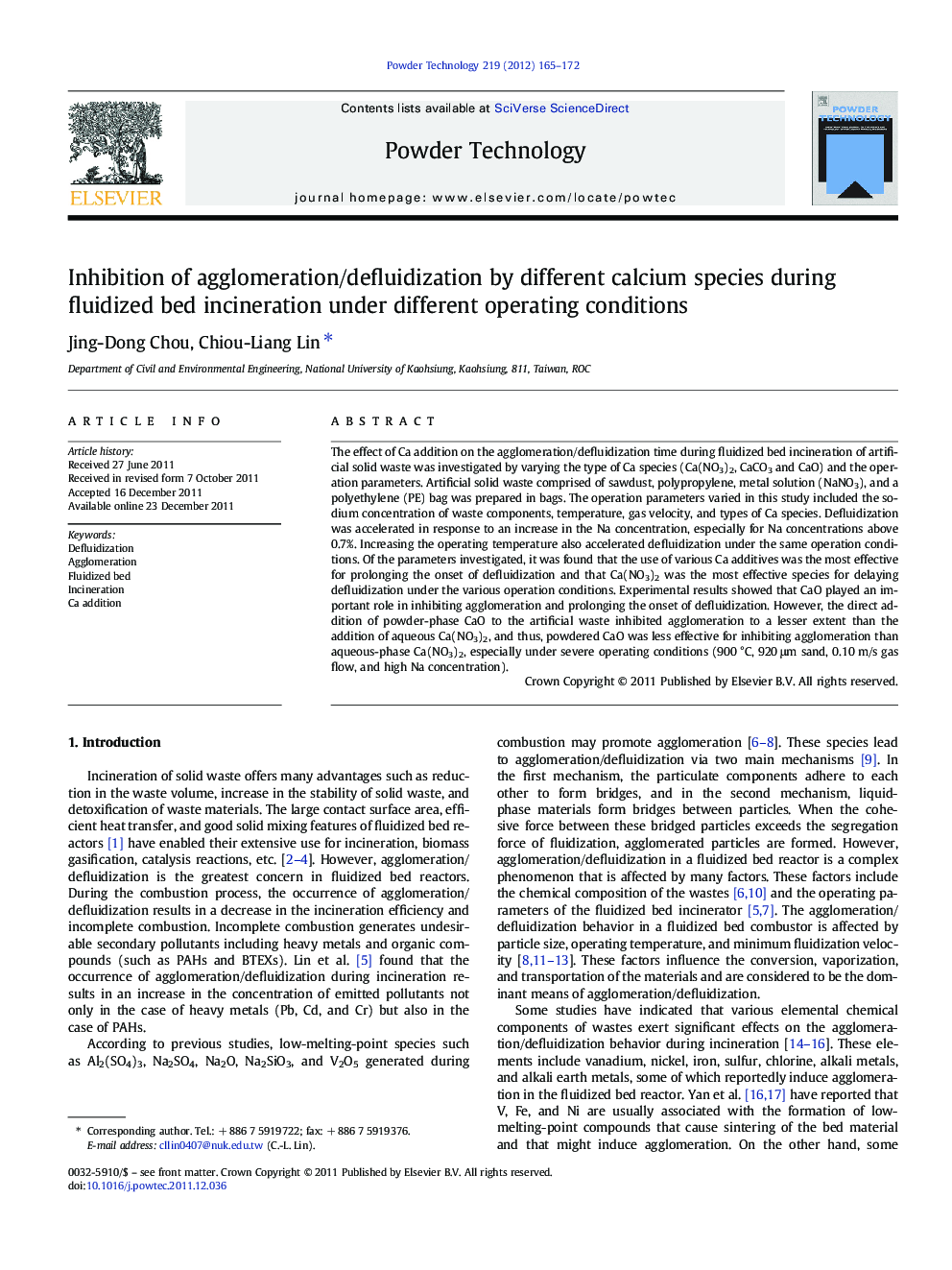| کد مقاله | کد نشریه | سال انتشار | مقاله انگلیسی | نسخه تمام متن |
|---|---|---|---|---|
| 237400 | 465704 | 2012 | 8 صفحه PDF | دانلود رایگان |

The effect of Ca addition on the agglomeration/defluidization time during fluidized bed incineration of artificial solid waste was investigated by varying the type of Ca species (Ca(NO3)2, CaCO3 and CaO) and the operation parameters. Artificial solid waste comprised of sawdust, polypropylene, metal solution (NaNO3), and a polyethylene (PE) bag was prepared in bags. The operation parameters varied in this study included the sodium concentration of waste components, temperature, gas velocity, and types of Ca species. Defluidization was accelerated in response to an increase in the Na concentration, especially for Na concentrations above 0.7%. Increasing the operating temperature also accelerated defluidization under the same operation conditions. Of the parameters investigated, it was found that the use of various Ca additives was the most effective for prolonging the onset of defluidization and that Ca(NO3)2 was the most effective species for delaying defluidization under the various operation conditions. Experimental results showed that CaO played an important role in inhibiting agglomeration and prolonging the onset of defluidization. However, the direct addition of powder-phase CaO to the artificial waste inhibited agglomeration to a lesser extent than the addition of aqueous Ca(NO3)2, and thus, powdered CaO was less effective for inhibiting agglomeration than aqueous-phase Ca(NO3)2, especially under severe operating conditions (900 °C, 920 μm sand, 0.10 m/s gas flow, and high Na concentration).
The defluidization time was shorter for no Ca addition. As Na concentration increased, the defluidization time increased with the addition of different Ca species. A comparison of the effect of addition of different Ca species on defluidization time showed that the addition of Ca(NO3)2 resulted in the longest defluidization time.Figure optionsDownload as PowerPoint slideHighlights
► Defluidization time decreased with increased the Na concentration and temperature.
► High gas velocity and small bed material led to increase the defluidization time.
► The addition Ca compounds prolonged the defluidization time effectively.
► CaO played an important role in inhibiting agglomeration.
► Ca(NO3)2 was the most effective in prolonging the defluidization time.
Journal: Powder Technology - Volume 219, March 2012, Pages 165–172